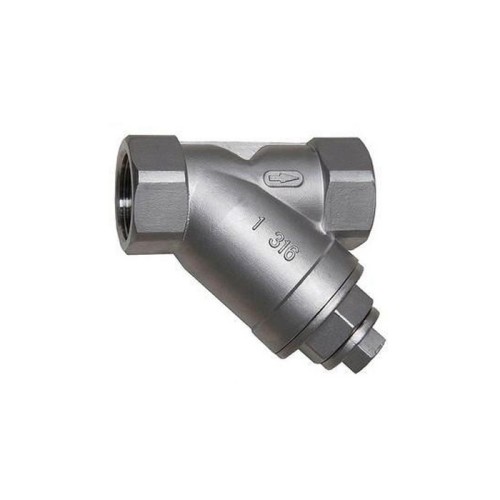Exploring the Benefits and Applications of Stainless Steel Swing Check Valves in Fluid Systems
Understanding Swing Check Valves A Key Component in Fluid Systems
Swing check valves are mechanical devices that play a crucial role in various fluid systems, ensuring that fluid flows in a single direction while preventing backflow. They are widely used in water supply, sewage treatment, and various industrial applications due to their reliability and simplicity. This article explores the features, working principle, advantages, and applications of swing check valves.
What is a Swing Check Valve?
A swing check valve is a type of one-way valve that consists of a disc, which swings on a hinge or pivot. The valve is installed in a pipeline, with the inlet on the bottom and the outlet on the side or top. When fluid flows in the designated direction, the disc opens, allowing fluid to pass through. When the flow stops or reverses, the disc swings back into its closed position, preventing backflow.
Working Principle
The operation of a swing check valve is relatively straightforward. When fluid enters the valve from below, the pressure lifts the disc, allowing fluid to flow freely. The design of the valve ensures that the disc rests against the seat when flow ceases, creating a tight seal that prevents reverse flow. The response time is almost instantaneous, providing significant protection against backflow-induced issues such as contamination or damage to equipment.
Advantages of Swing Check Valves
1. Simple Design The mechanical simplicity of swing check valves means they have fewer parts than other types of check valves. This design reduces maintenance needs and enhances durability.
2. Low Pressure Drop Swing check valves generally have a lower pressure drop compared to ball check valves and other design variants. This feature allows for more efficient fluid flow within the system.
3. Wide Range of Sizes and Materials Swing check valves are available in various sizes and materials – from cast iron to stainless steel – accommodating different pressure, temperature, and fluid compatibility requirements.
ss swing check valve

5. Cost-Effective Due to their simple design and ease of manufacture, swing check valves are often more economical than other types, making them a popular choice for many applications.
Applications of Swing Check Valves
Swing check valves are versatile components used in various applications, including
- Water Supply Systems They help maintain one-way flow in municipal water systems, ensuring that water does not flow back into the supply lines after usage.
- Sewage Treatment In wastewater systems, swing check valves protect pumps and other equipment from potential backflow, thus maintaining system integrity and efficiency.
- Industrial Processes In piping systems for chemical, oil, and gas applications, these valves prevent backflow that could lead to contamination or equipment failure.
- Fire Protection Systems They are also used in fire sprinkler systems to ensure that water flows only in the intended direction, preventing backflow that could compromise safety.
Conclusion
Swing check valves are essential components that safeguard fluid systems by preventing backflow. Their simple yet effective design, low pressure drop, and wide range of applications make them invaluable in various industries. By understanding their operation and benefits, engineers and system designers can choose the appropriate valves for their specific applications, enhancing the performance and reliability of fluid transport systems. As industries continue to evolve, swing check valves will remain a fundamental element in maintaining system integrity and efficiency.
-
The Key to Fluid Control: Exploring the Advantages of Ball Valves in Industrial SystemsNewsJul.09,2025
-
The Versatile World of 1, 2, and 3 Piece Ball ValvesNewsJul.09,2025
-
Stainless Steel Ball Valves: The Ideal Choice for Efficient Flow ControlNewsJul.09,2025
-
Optimizing Fluid Control with Ball Float ValvesNewsJul.09,2025
-
Manual Gate Valves: Essential for Control and EfficiencyNewsJul.09,2025
-
Everything You Need to Know About Butterfly ValvesNewsJul.09,2025
-
The Versatility of Wafer Type Butterfly ValvesNewsJul.08,2025




